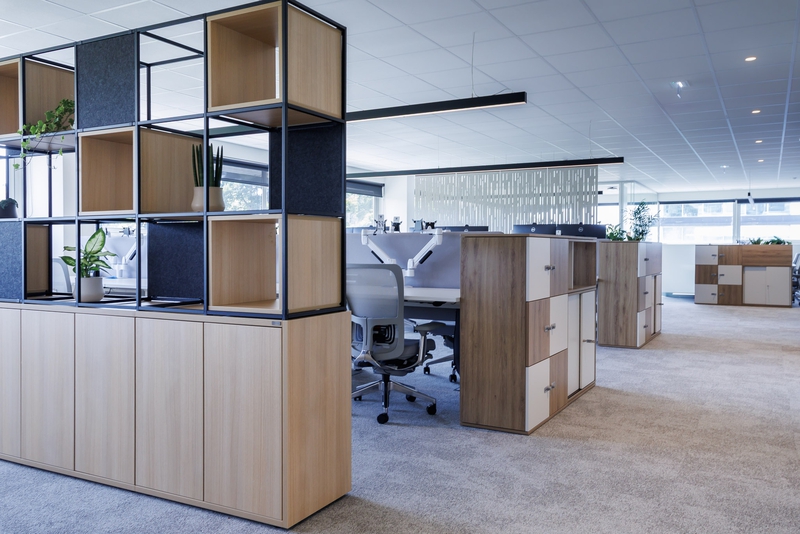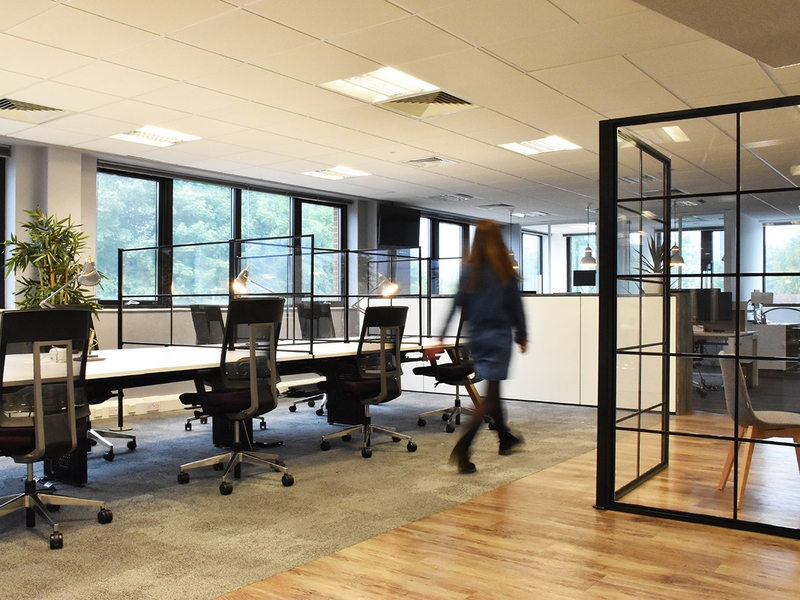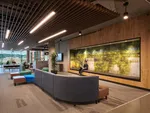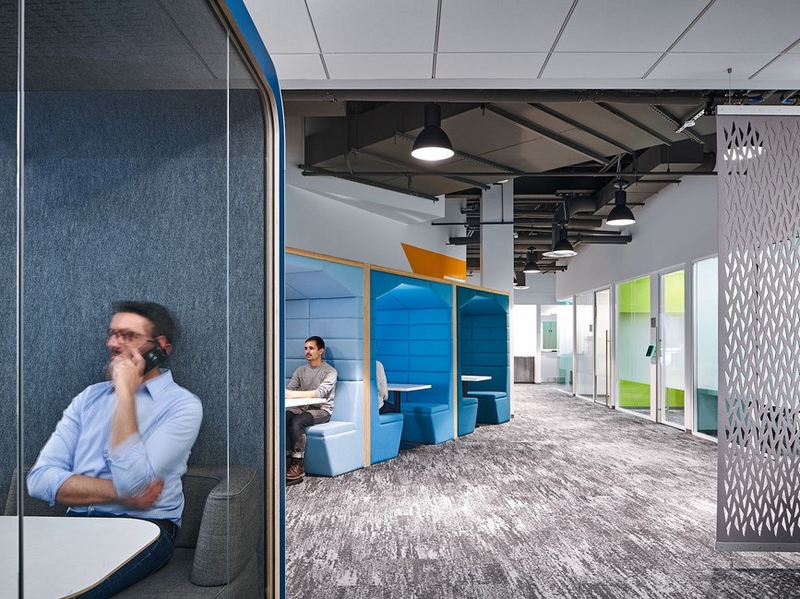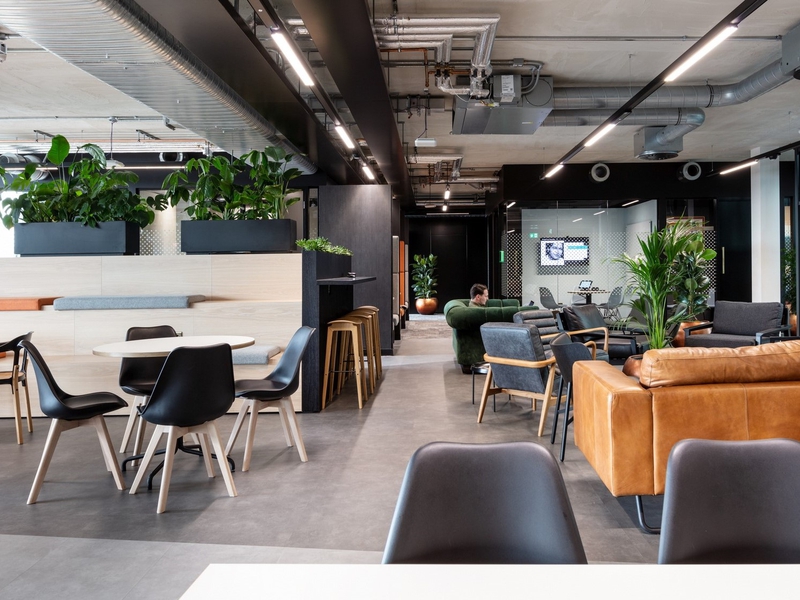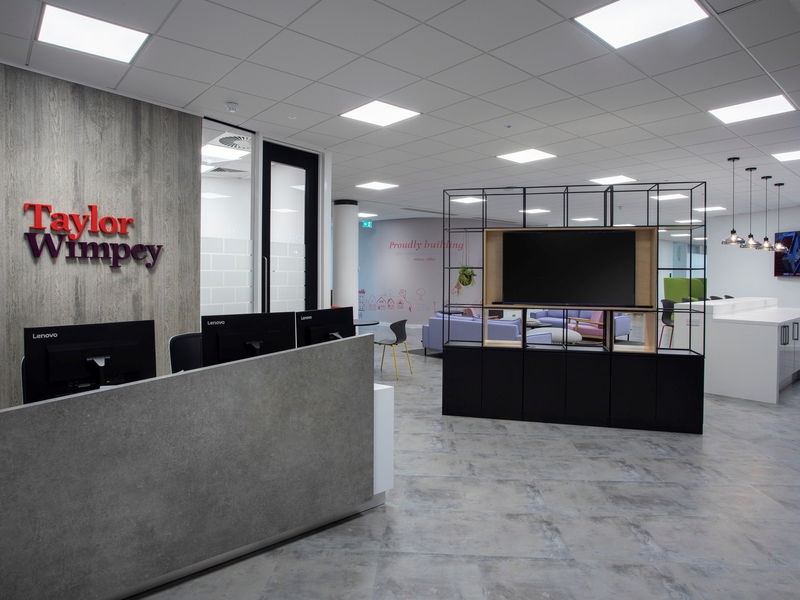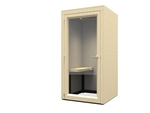23 Jul 2020
Industry Trends
The global exodus from the workplace deserted urban city centres overnight, as everyone returned home to set up their makeshift offices. There’s no doubt that COVID-19 has transformed how we work - and the effects of this transformation will be lasting. Working from home was a completely unprecedented experience for the vast majority of workers and many lessons have been learnt as a result. Gensler’s US Work From Home survey discovered that 56% of workers expect to spend at least 1 day working from home per week in the future. People want to continue elements of this new experience into the future, for when we expect to reach a ‘new normal’. We foresee a hybrid reality where the home and the workplace will serve as two key environments forming a renewed user experience.

Fears of Mass Transportation
Not only has COVID-19 and its resulting lockdown affected people’s attitude to how and where they work, it has instilled fears of the health risks of exposure to other people and awakened a consciousness of constant awareness as to one’s own health and safety. As we start to reopen our workplaces, this fear and wariness is a new mindset that has to be considered at every step of the workplace experience. People may be more comfortable exposing themselves to their colleagues, as they know them well and are therefore more likely to trust them, not to mention the fact that they have been craving their company for the past 5 months. However, commuting back to the city centre, or the downtown HQ, is where this fear will suffer most. Mass transportation, particularly at peak times, poses a huge health threat in the light of the coronavirus, so the daily commute becomes a barrier of elevated risk between the two working environments. In the context of larger cities like London and New York City, the tube or the subway are likely to be the least popular modes of transport; their former levels of maximum density during rush hour being exactly the conditions people will be wanting to avoid. Although transportation management authorities will no doubt be developing strategies to address these high density levels, it will be essential to first overcome the health-related anxiety felt by passengers. This fear of mass transit could bring about resistance and reluctance amongst people returning to the city centre or downtown workspaces.

Retreat to Suburbia
As a result, we could see a mass retreat towards suburban locations. Large corporates may find that their suburban campuses rise in popularity and we could see a climbing trend in coworking and flex space in outer-city suburbia. People want to work closer to home. The extended home working experience of the past 5 months has opened our eyes to how technology can keep us connected whilst maintaining an improved work-life balance with the absence of the commute. Being able to walk, cycle or drive a quick and easy route removes the unwanted stress and risks posed by urban mass transportation systems. This barrier no longer needs to be overcome and people can then enjoy an enhanced working experience much closer to home. Although you may not be amongst your ‘tribe’ or your familiar colleagues, a coworking space is dedicated to providing the optimum experience for getting work done, unlike the home. From a wellbeing perspective, simply to be around other people is like a tonic, having been shut in the home for such an extended period, and as Ala Sobierajski of HuddleHQ said in a recent panel discussion with Spacestor “you are inspired by the presence of other talent.” However, there’s a certain energy, passion and personality about the dense community of an urban centre that is hard to recreate in suburban areas. As Natalie Engels of Gensler mentioned during the same panel debate, “when you start to move out to the suburbs, can you find a community that can mimic that energy level?”

Hub & Spoke Model
A solution that responds to this is a rethought workspace model referred to as ‘hub and spoke’. The hub being the organisation’s headquarters, usually located in an urban setting, becomes the destination space. Natalie Engels referred to the hub as being a place you’d go occasionally to get “a dose of, or grounding in, the megaculture of the company.” The spoke locations are more regional workspaces strategically located close to where people live, in the suburbs. This real estate model gives employees more flexibility; they have the choice of commuting into the urban hub or working in their closest spoke location. With the anxieties and fears of personal health and safety caused by the pandemic, this model would be an attractive solution that overcomes the risks posed by a city commute, yet still provides an enriching social connection to the company culture.

It will be interesting to observe how companies return to their physical workplaces. The WFH experiment brought about by COVID-19 has changed many people’s attitudes to how and where they work, and data is discovering that although, overwhelmingly, people want to return to the office, they don’t want to give up the home environment altogether and would rather a hybrid experience of both locations. The fear of mass transportation will take time to overcome and will most likely shape choices relating to workplace strategy in the initial phases of return, perhaps reducing the density of urban settings with the rising popularity of suburban workspaces, closer to home.
Share this article




